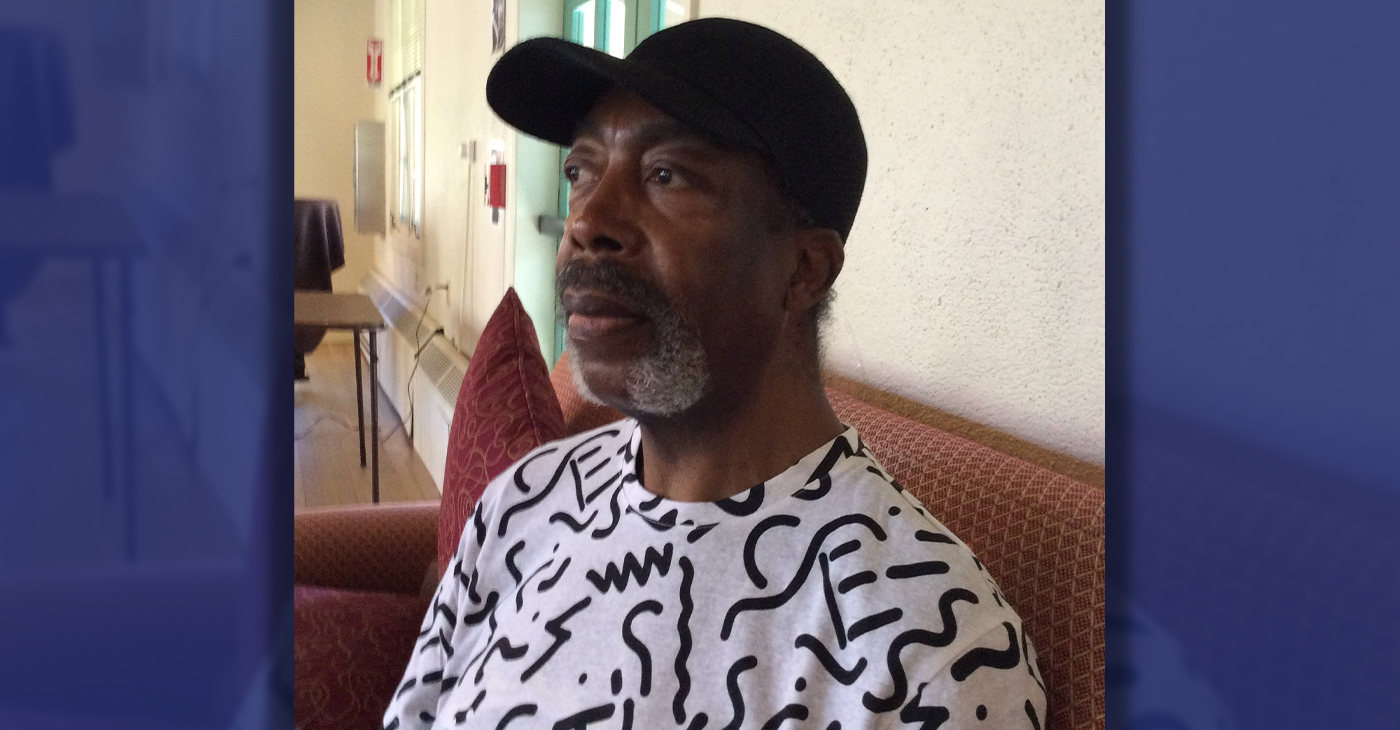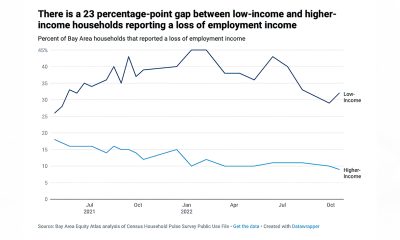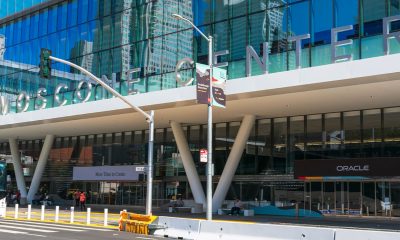Business
Economic Recovery Eludes Black Workers
By Freddie Allen
NNPA Senior Washington Correspondent
WASHINGTON (NNPA) – The slow-moving, uneven economic recovery continues to elude Black workers and some economists predict that even with a falling unemployment rate, at the end of 2015, Blacks will still be further away from full recovery than Whites.
A recent study by the Economic Policy Institute (EPI), a Washington, D.C.-based think tank focused on low- and middle-income families, said that in the fourth quart of 2014, the national unemployment rate for Whites was “within 1 percentage point of pre-recession levels, while the Black unemployment rate was 2.4 percentage points higher than it was at the end of 2007.”
The report also explained that, “True labor market improvements are more likely in those states experiencing both unemployment declines and increases in the share of workers employed,” also known as the employment-population ratio or EPOP ratio.
The study continued: “On the other hand, declining unemployment in those states without increasing shares of workers employed may suggest workers are simply dropping out of the labor force.”
Valerie Wilson, director of the Program on Race, Ethnicity, and the Economy for EPI, analyzed 2014 data for the unemployment rate, the EPOP ratio, and the long-term unemployment rate, and said that using the unemployment rate to determine the health of the labor market may be overstating the progress of the economic recovery in the U.S.
“Between 2013 and 2014, the annual black unemployment rate declined most in Arkansas (6.5 percentage points), Indiana (4.6 percentage points), and Tennessee (3.6 percentage points). Of these, only Arkansas had a significantly higher Black employment- to-population ratio in 2014 (from 46.8 to 50.1 percent),” stated the EPI report. “Among states for which reliable estimates could be calculated, 15 states experienced a significant decline in the Black unemployment rate between 2013 and 2014 and in six of those states the Black EPOP increased. On the other hand, between 2013 and 2014 the Black unemployment rate significantly increased in Missouri (3.2 percentage points) and Wisconsin (4.8 percentage points).”
With a Black population of 6.5 percent, Wisconsin recorded the highest annual jobless rate for Blacks in the U.S. in 2014 (19.9 percent).
Paul Randus, a columnist for MarketWatch.com, said that Scott Walker, the governor of Wisconsin and a Republican presidential hopeful, is known nationally, “as the governor who eliminated collective bargaining rights for most public employee unions in Wisconsin – and then beat back a recall motion over it.”
Randus wrote, “The win further emboldened Walker,” and that the governor recently signed a “right to work bill” that economists say will chip away at labor union power in the state. The policies were supposed to spur job and business growth, but the governor has fallen almost 100,000 jobs short of his 2010 pledge to create 250,000 jobs during his first term.
The anti-union policies in Wisconsin are a big problem for both White and Black workers in the Badger State, said Wilson.
Even though, Black workers in Virginia (19.7 percent Black population) experienced the lowest annual Black jobless rate in 2014 at 8 percent, it was still, “higher than the highest White rate of 7 percent in Nevada,” stated the EPI report. In the fourth quarter of last year, the 11 percent Black unemployment rate was, “higher than the national unemployment rate at the peak of the recession (9.9 percent in the fourth quarter of 2009).”
The Black jobless rate is expected to dip to 10.4 percent, by the fourth quarter of 2015, but that’s nowhere near the pre-recession unemployment level, which was 8.6 percent.
“In 2014, long-term unemployment among African American workers (39.7 percent) was the highest of any racial or ethnic group, although it was down 3.7 percentage points from 2013,” stated the report. “Among states with a large enough sample size for reliable estimates, only three had significant declines in long-term unemployment between 2013 and 2014: North Carolina (14.4 percentage points), Florida (10 percentage points) and Texas (8.2 percentage points). In 2014, the highest shares of long-term unemployed black workers were in the District of Columbia (56.3 percent), Illinois (52.7 percent), Alabama (48.9 percent) and New Jersey (48.6 percent).”
The U.S. economy added 126,000 jobs in March, far below analysts’ expectations, and the national unemployment rate was still 5.5 percent.
Wilson said that record-setting snow falls and cold temperatures suppressed hiring and demand consumption in March.
The Black jobless rate decreased from 10.4 percent in February to 10.1 percent in March, compared to the White unemployment rate, which was stagnant at 4.7 percent.
The unemployment rate for Black men over 20 years old decreased from 10.4 percent in February to 10 percent in March and the EPOP ratio also rose from 60.3 percent to 60.5 percent. The jobless rate for White men was 4.5 percent in February and 4.4 percent in March. The EPOP ratio was unchanged at 69.2 percent.
Wilson said that she will be keeping a close eye on the unemployment rate for Black women, which has increased over the last three months from 8.7 percent in January to 9.2 percent in February.
The EPOP ratio for Black women over 20 years old was 55.8 percent in March, the same mark recorded last month. The jobless rate for White women was 4.2 percent in February and March and the EPOP ratio was down 55.2 percent to 55 percent.
“The recovery has been moving at a less than optimal pace for the last five years, partly due to inadequate demand sufficient enough to drive job growth,” said Wilson. “We need strong job growth to continue beyond this year, if we’re going to see the Black unemployment rate drop significantly below 10 percent and get anywhere near what can be considered a recovery-level rate.”
###
Bay Area
Mayor Breed Proposes Waiving City Fees for Night Markets, Block Parties, Farmers’ Markets, Other Outdoor Community Events
Mayor London N. Breed introduced legislation on April 26 to encourage and expand outdoor community events. The first will waive City fees for certain events, making them less costly to produce. The second will simplify the health permitting for special event food vendors through the creation of an annual permit. Both pieces of legislation are part of the Mayor’s broader initiative to bring vibrancy and entertainment to San Francisco’s public right of ways and spaces.

Mayor’s Press Office
Mayor London N. Breed introduced legislation on April 26 to encourage and expand outdoor community events.
The first will waive City fees for certain events, making them less costly to produce. The second will simplify the health permitting for special event food vendors through the creation of an annual permit. Both pieces of legislation are part of the Mayor’s broader initiative to bring vibrancy and entertainment to San Francisco’s public right of ways and spaces.
Outdoor community events are integral to San Francisco’s vibrant culture and sense of community. These events include night markets, neighborhood block parties and farmers markets, and bolster the City’s economy by supporting local businesses and attracting tourists eager to experience San Francisco’s unique charm and food scene.
They offer residents, workers and visitors, opportunities to engage with local artists, musicians, and food vendors while enjoying the San Francisco’s stunning outdoor spaces and commercial corridors.
The legislation will allow for more and new community gatherings and for local food vendors to benefit from the City’s revitalization.
“San Francisco is alive when our streets are filled with festivals, markets, and community events,” said Breed. “As a city we can cut fees and streamline rules so our communities can bring joy and excitement into our streets and help revitalize San Francisco.”
Fee Waiver Legislation
The events that can take advantage of the new fee waivers are those that are free and open to the public, occupy three or fewer city blocks, take place between 8 a.m. and 10 p.m., and have the appropriate permitting from the ISCOTT and the Entertainment Commission.
The applicant must be a San Francisco based non-profit, small business, Community Benefit District, Business Improvement District, or a neighborhood or merchant association. Fees eligible for waiver include any application, permit, and inspection/staffing fees from San Francisco Municipal Transportation Agency, Department of Public Health, Fire Department, Entertainment Commission, and Police Department.
Currently, it can cost roughly anywhere between $500-$10,000 to obtain permits for organized events or fairs, depending on its size and scope. Organizations and businesses are limited to a maximum of 12 events in one calendar year for which they can receive these fee waivers.
Food Vendor Streamlining Legislation
The second piece of legislation introduced will help special event food vendors easily participate in multiple events throughout the year with a new, cost-effective annual food permit. Food vendors who participate in multiple events at multiple locations throughout the year will no longer need to obtain a separate permit for each event. Instead, special event food vendors will be able to apply and pay for a single annual permit all at once.
“Many successful food businesses either begin as pop-up vendors or participate in special events to grow their business,” says Katy Tang, Director of the Office of Small Business. “Giving them the option for an annual special event food permit saves them time and money.”
Currently, food vendors are required to get a Temporary Food Facility (TFF) permit from the Department of Public Health (DPH) in order to participate in a special event, among permits from other departments.
Currently, each special event requires a new permit from DPH ranging from $124-$244, depending on the type of food being prepared and sold. Last year, DPH issued over 1,500 individual TFF permits. With the new annual permit, food vendors selling at more than four to six events each year will benefit from hundreds of dollars in savings and time saved from fewer bureaucratic processes.
“This legislation is a step in the right direction to make it easier for food vendors like me to participate in citywide events,” said Dontaye Ball, owner of Gumbo Social. “It saves on time, money and makes it more effective. It also creates a level of equity.”
Bay Area
Faces Around the Bay: Sidney Carey
Sidney Carey was born in Dallas, Texas. He moved with his family to West Oakland as a baby. His sister is deceased; one brother lives in Oakland. Carey was the Choir Director at Trinity Missionary Baptist Church for 18 years.

By Barbara Fluhrer
Sidney Carey was born in Dallas, Texas. He moved with his family to West Oakland as a baby. His sister is deceased; one brother lives in Oakland.
Carey was the Choir Director at Trinity Missionary Baptist Church for 18 years.
He graduated from McClymonds High with a scholarship in cosmetology and was the first African American to complete a nine-month course at the first Black Beauty School in Oakland: Charm Beauty College.
He earned his License, and then attended U.C., earning a secondary teaching credential. With his Instructors License, he went on to teach at Laney College, San Mateo College, Skyline and Universal Beauty College in Pinole, among others.
Carey was the first African American hair stylist at Joseph and I. Magnin department store in Oakland and in San Francisco, where he managed the hair stylist department, Shear Heaven.
In 2009, he quit teaching and was diagnosed with Congestive Heart Failure. He was 60 and “too old for a heart transplant”. His doctors at California Pacific Medical Center (CPMC) went to court and fought successfully for his right to receive a transplant. One day, he received a call from CPMC, “Be here in one hour.” He underwent a transplant with a heart from a 25-year- old man in Vienna, Austria
Two years later, Carey resumed teaching at Laney College, finally retiring in 2012.
Now, he’s slowed down and comfortable in a Senior Residence in Berkeley, but still manages to fit his 6/4” frame in his 2002 Toyota and drive to family gatherings in Oakland and San Leandro and an occasional Four Seasons Arts concert.
He does his own shopping and cooking and uses Para Transit to keep constant doctor appointments while keeping up with anti-rejection meds. He often travels with doctors as a model of a successful heart-transplant plant recipient: 14 years.
Carey says, “I’m blessed” and, to the youth, “Don’t give up on your dreams!”
Business
Maximizing Your Bank Branch Experience
In a world of online tools that let you make banking transactions with the touch of a button, the idea of visiting a branch might seem unnecessary. However, if you haven’t visited your local branch recently, you might be surprised by what it has to offer. Your branch is much more than a place to deposit and withdraw money – it can offer the opportunity to build valuable relationships with people who can help you achieve financial independence.

Sponsored by JPMorgan Chase & Co.
In a world of online tools that let you make banking transactions with the touch of a button, the idea of visiting a branch might seem unnecessary.
However, if you haven’t visited your local branch recently, you might be surprised by what it has to offer. Your branch is much more than a place to deposit and withdraw money – it can offer the opportunity to build valuable relationships with people who can help you achieve financial independence.
Diedra Porché, Head of Community and Business Development at Chase, talks about how the bank model has evolved to maximize the branch experience for customers; how connecting with your local branch team can help you think differently about money and investing for your future.
How can a customer feel connected to a bank branch?
I love that question because we ask ourselves the same thing every day. Being part of the community means meeting with local leaders to find out what they need from us and then designing our branches around that. For example, at some of our community branches we have what we call a living room where we can host financial workshops, small business pop-up shops or nonprofit organization meetings. We also hire locally. You feel much more connected talking about financial aspirations with people from your community who went to the same high school, place of worship or maybe frequented the same recreation center down the street when they grew up.
How can I build a relationship with my bank?
Customers should feel comfortable sharing their goals, needs and wants with their banker. Also, it helps to remember the Community Manager is there to help solve your finance challenges and build a roadmap for success. You might have a short-term or long-term goal to open a business, build your credit, become debt-free, buy a home, or save for retirement, and our community team can help. At Chase, we strive to make dreams possible for everyone, everywhere, every day. Your financial future starts with building those relationships.
How can customers change negative perceptions they have about managing their money?
Far too often, customers are intimidated when they visit a bank. Our goal is to demystify banking and money myths empowering people to make the right decisions. For example, a big myth is assuming you need a lot of money to have a bank account. You don’t! Another myth is you need to carry a balance on your credit card to build credit — actively using your credit card can demonstrate that you can use credit responsibly but carrying a balance won’t necessarily improve your credit score. Finally, understanding mobile and online banking safety is key. There are so many safeguards and protections in place to guard your personal information and funds.
What’s an easy step one can take to shift their financial behavior right now?
Cultivating self-awareness is a good first step. Start by taking inventory of your spending. Be honest with yourself about what you need and what you want. Too often, people confuse the two, which leads to bad decisions. Rent is something you need to pay. An extra pair of shoes is something you may want but before you buy them ask yourself if that’s the best use of your hard-earned money. Too often, our beliefs and our fears shape our financial realities. If any of those beliefs are limiting your financial behavior, it’s important to question and examine them, and then decide you’re open to learning something different.
What’s one perception about banking that you’d like to change?
I think folks are surprised there are so many resources available and accessible both at our branches and online, it’s always a good idea to visit a nearby branch and speak to a Community Manager or banker. Outside of what we offer in-branch, our teams also work with local neighborhood partners who provide a variety of services to support the community, businesses and residents. I received a unique piece of feedback from an employee who started with the bank and had lived in the same community his whole life. When he visited his local community branch, he said, “Diedra, when I walked in, I felt dignified.” Every time I recount that story, it warms my heart because that’s what we want — we want our centers to belong to the community.
-

 Community3 weeks ago
Community3 weeks agoFinancial Assistance Bill for Descendants of Enslaved Persons to Help Them Purchase, Own, or Maintain a Home
-

 Business3 weeks ago
Business3 weeks agoV.P. Kamala Harris: Americans With Criminal Records Will Soon Be Eligible for SBA Loans
-

 Activism4 weeks ago
Activism4 weeks agoOakland Post: Week of April 10 – 16, 2024
-

 Community3 weeks ago
Community3 weeks agoAG Bonta Says Oakland School Leaders Should Comply with State Laws to Avoid ‘Disparate Harm’ When Closing or Merging Schools
-

 Activism2 weeks ago
Activism2 weeks agoOakland Post: Week of April 24 – 30, 2024
-

 Community2 weeks ago
Community2 weeks agoRichmond Nonprofit Helps Ex-Felons Get Back on Their Feet
-

 City Government3 days ago
City Government3 days agoCourt Throws Out Law That Allowed Californians to Build Duplexes, Triplexes and RDUs on Their Properties
-

 Community2 weeks ago
Community2 weeks agoOakland WNBA Player to be Inducted Into Hall of Fame

























































